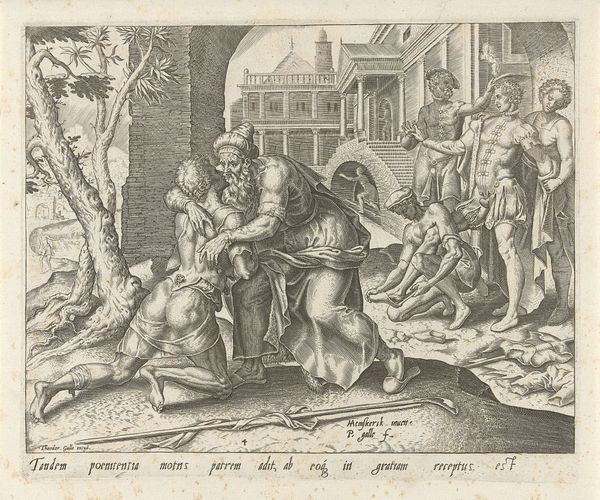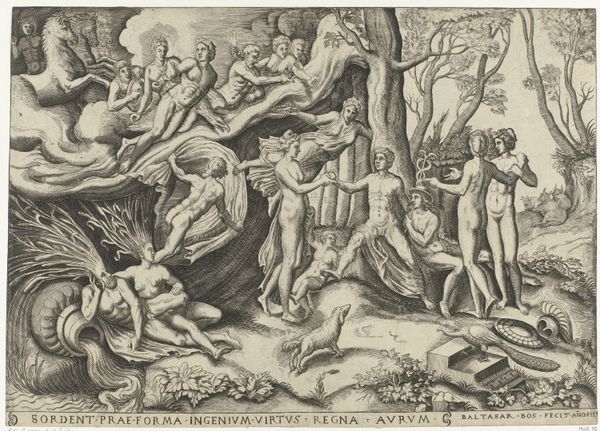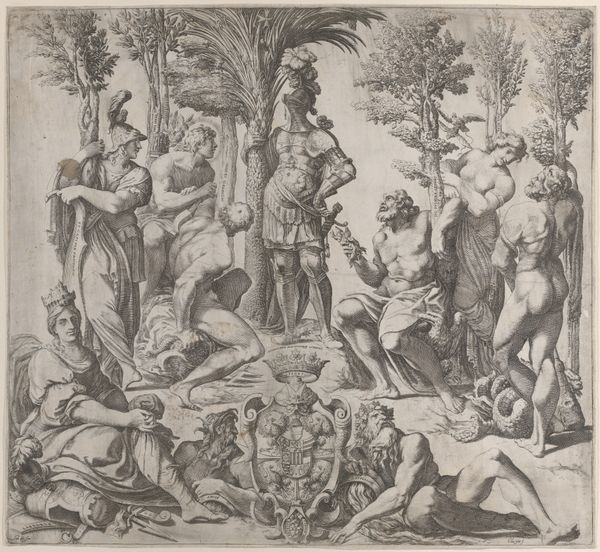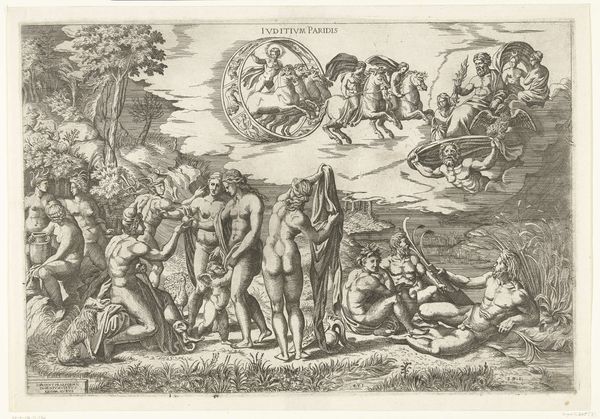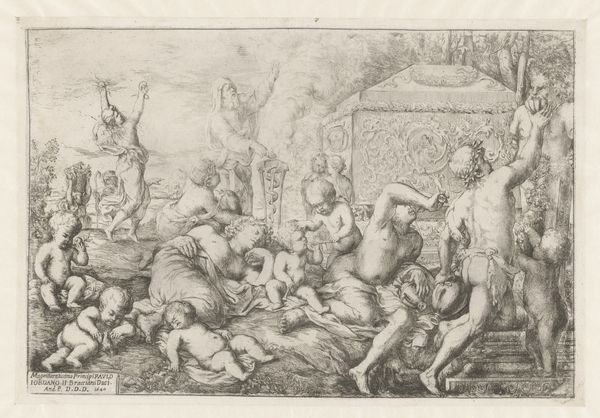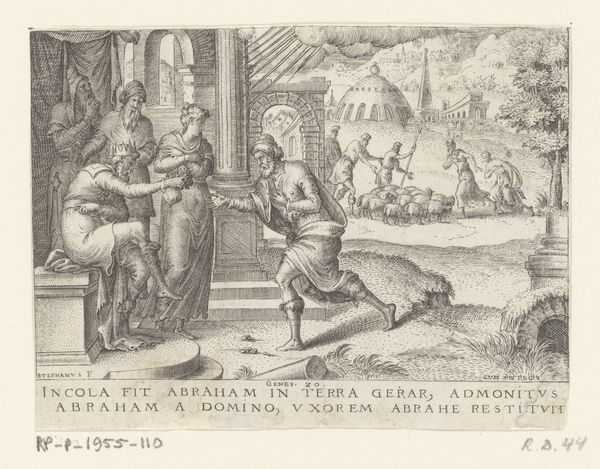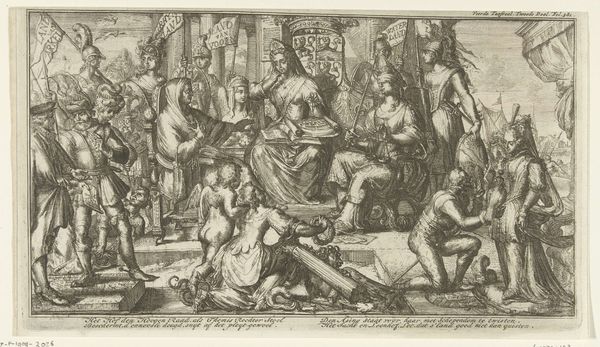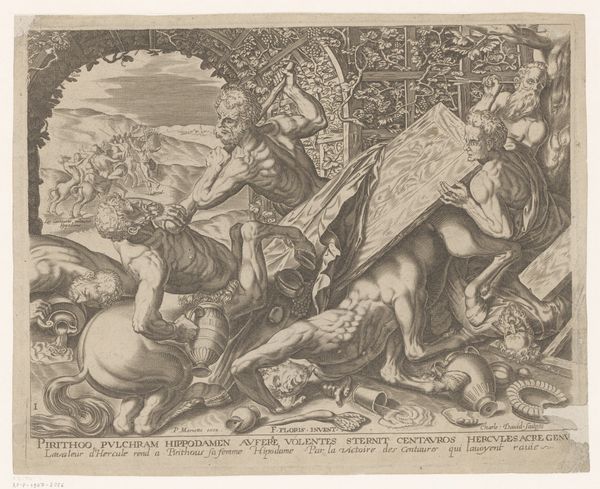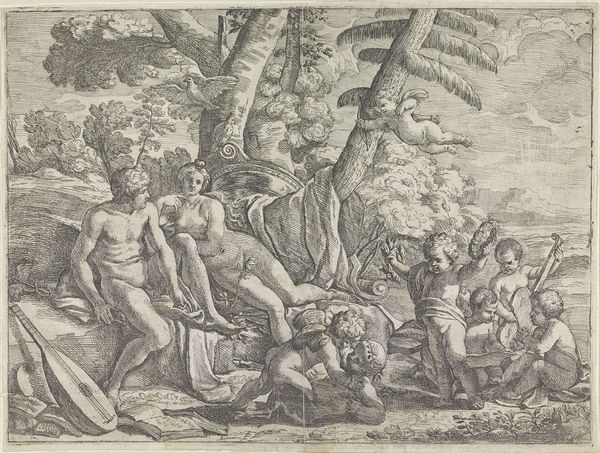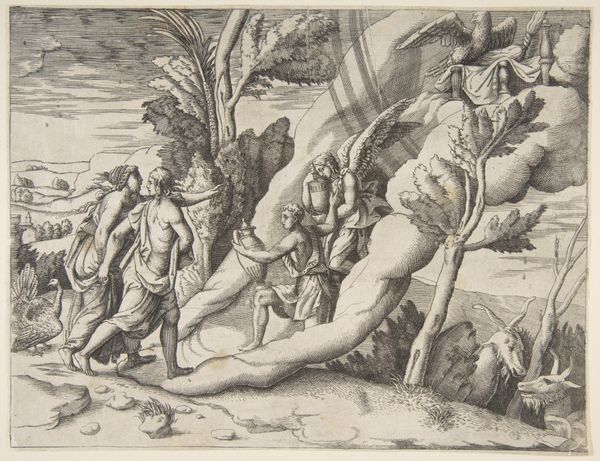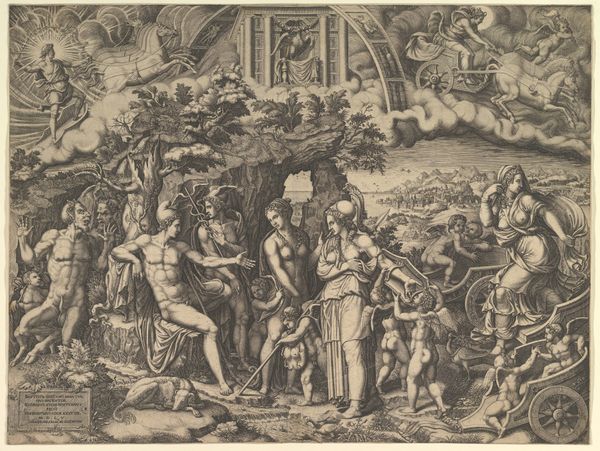
drawing, print, paper, engraving
#
drawing
#
allegory
# print
#
mannerism
#
figuration
#
paper
#
form
#
pencil drawing
#
line
#
history-painting
#
italian-renaissance
#
engraving
Dimensions: 320 × 445 mm
Copyright: Public Domain
Editor: Here we have "The Sacrifice of Iphigenia," an engraving by Nicolas Beatrizet from 1553. There’s such drama! What really stands out to me is the incredibly detailed line work and how it conveys a sense of controlled chaos. All these figures… It feels theatrical, almost like a stage production. What do you make of this, considering the historical context? Curator: This is such a fascinating work. See how Beatrizet presents a layering of realities – the immediate drama of Iphigenia about to be sacrificed is contrasted by the distant cityscape and the figure being carried off by the eagle. Can you imagine the emotional impact of this image in the 16th century, when engravings were a primary means of disseminating stories and allegories? What underlying tensions might this image reveal to contemporary viewers, who might feel helpless to stop an unfair outcome? Editor: I didn't think about the distant cityscape adding to the layers! The eagle carrying someone away is an interesting contrast indeed. This brings to mind other Renaissance images with multiple stories within one scene. What about the altar and figures surrounding the fire; do they play a specific symbolic role in driving home the message? Curator: Precisely! Fire represented purification but also destruction. Notice how the figures around the altar perform almost ritualistic gestures and project a stoicism while averting their eyes? Their presence underscores how individual will bows to the perceived needs of society – or perhaps more accurately, those in power who defined those needs. There’s a heavy sense of duty and unavoidable fate woven into the symbolism here. Do you think viewers at the time found that to be a source of comfort, or dread? Editor: Wow, you've given me a lot to think about. It seems like "The Sacrifice of Iphigenia" isn’t just a depiction of a classical story but also a complex commentary on duty, power, and the individual. It makes me appreciate how symbols connect us to different eras. Curator: And it's in contemplating those connections that we truly understand the lasting power of images. Every element, from the fire to the cityscape, acts as a symbolic conduit to the past and provides a means for critical thought for generations to come.
Comments
No comments
Be the first to comment and join the conversation on the ultimate creative platform.

